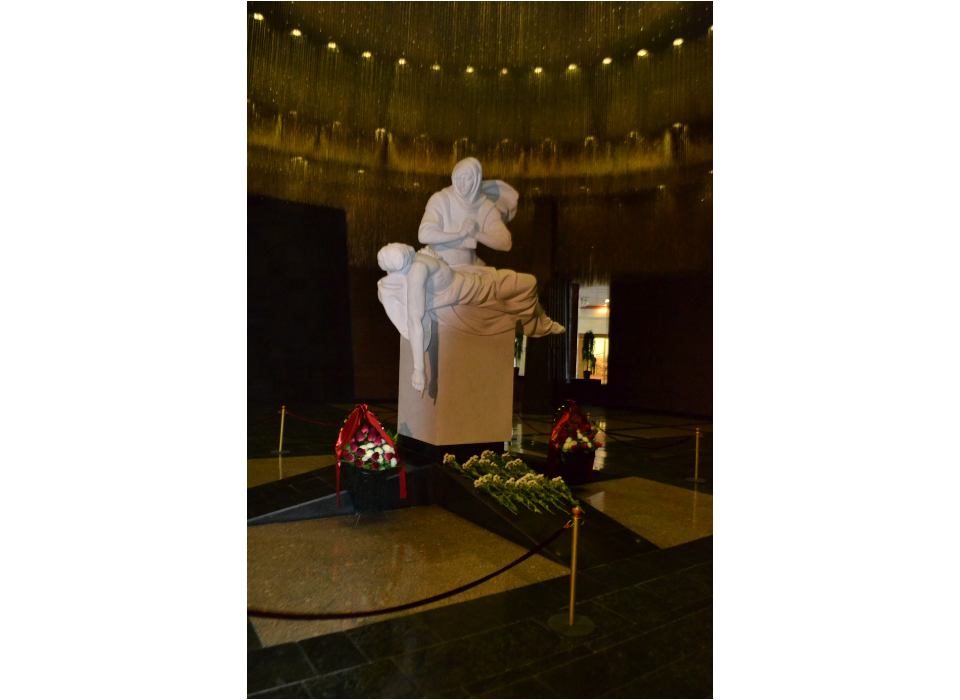During World War II, the Soviet Union suffered more deaths than any other combatant nation. The bloodshed was so vast that scholars continue to debate the statistics, but suffice it to say that reputable historians generally estimate the death toll to be in the range of 23 million to 27 million killed. What truly gives a long pause to students of history who seek to understand the dimensions and depth of this human carnage is that the vast majority of the deceased were civilians—average men and women, children, and elderly people of many different ethnicities, religious and cultural backgrounds known mainly among their families and friends. When one compares the numbers to American losses in the war, Soviet military deaths outnumber the American by roughly 20 to 1 (approximately 8.5 million Soviet deaths to 416,000 American). Given that disparity, it is almost impossible to adequately comprehend that Soviet civilian losses were better than double that of their military deaths. When one confronts the reality that each of those persons was an individual with their own hopes, lives, and families, one begins to grasp how truly impossible it is to understand or calculate what was lost.
The magnitude and depth of this loss are unforgettably evoked in the Hall of Remembrance and Sorrow at the Great Patriotic War Museum in Moscow.
Located architecturally under the Hall of Glory, which celebrates the heroes of the Soviet military who delivered ultimate victory in the war, the Hall of Remembrance and Sorrow is dedicated to the human cost of the war. It is a somber and reverent experience. Visitors enter and walk through the long marble hall, often bearing flowers. Hundreds of thousands of light strands stream downward, showering the space above and hinting of the ascent of the souls of the departed as well as the tears of those left behind. At the end of the hall, one enters a rotunda. A pure white statue of Mother Russia hovers with clasped hands over her fallen son, her cape raised in the wind almost like an angel’s wing. The soldier son’s dead arm drops straight downward with his index finger still extended, the hand poised as if missing a weapon and suggesting that he fought and resisted to his last breath—an honorable death, the death of a warrior. His strong body, now limp and wrapped in a death shroud, implies a final peace. But I do not see that peace in the mother’s face: I see grieving, sorrow, and undying memory.
In this concluding post of eight describing how the Great Patriotic War Museum tells the story of World War II, I hope that readers’ curiosity has been stirred to learn more about this history, and perhaps even inspired some to visit the museum in Moscow in the future. But I also hope that readers connect on a humanistic level with the ultimate meanings of what World War II meant, and why it is so important today that we remember.
Note: This is the last of eight posts about the Great Patriotic War Museum in Moscow. Read Part One. Part Two. Part Three. Part Four. Part Five. Part Six. Part Seven.

"No matter one’s age, travel is a unique and exciting educational experience. In my work, I have had the opportunity to reflect on history, events, and people in the places where they experienced life. Through the viewfinder, we can not only find history and perspective, but create memory, and evoke our evergreen past."
– Keith Huxen, PhD, Senior Director of Research and History, The National WWII Museum
Keith Huxen
Keith is the former Senior Director of Research and History in the Institute for the Study of War and Democracy at The National WWII Museum.
Cite this article:
MLA Citation:
APA Citation:
Chicago Style Citation:





![Max Fuchs, New York City cantor, sings as Rabbi Sydney [sic] Lefkowitz, Richmond, VA, conducts the first Jewish services from Germany.](/sites/default/files/styles/max_650x650/public/2025-10/image1.jpg)



